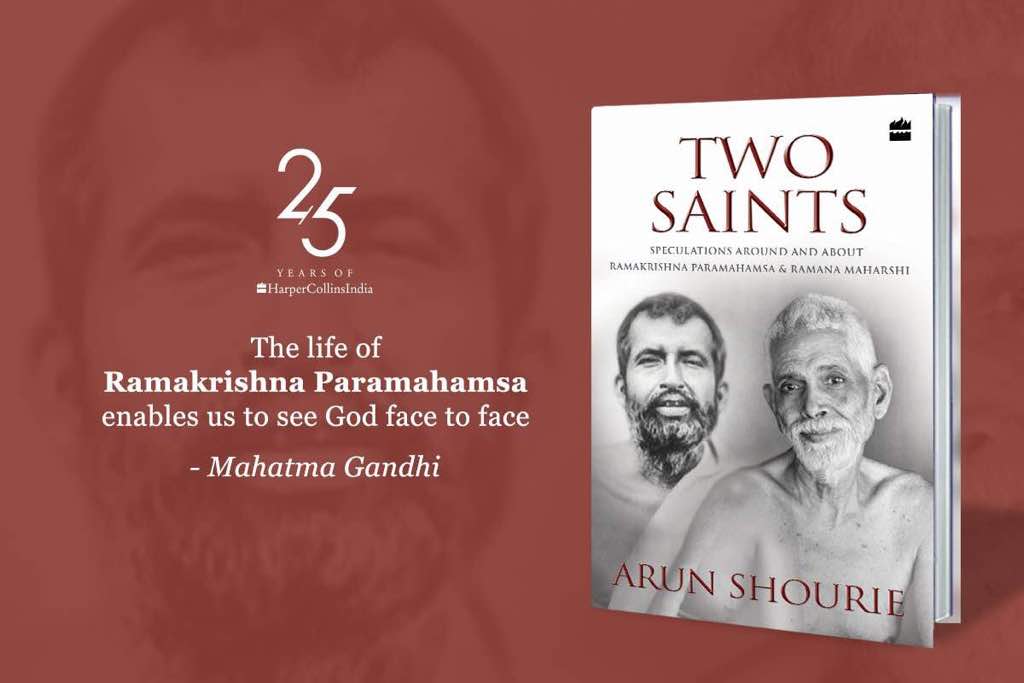
Eminent writer Arun Shourie is back with faith! He shows his faith in two saints of India who are seen as himalayas of wisdom. Ramkrishna Paramhansa and Maharshi Ramanna are two awakened souls. But are they really aware about their divinity. Arun Shourie questions in his penchant style. The book will be release on 31st May, but the buzz has created. Hope it satiates the mind and soul of this spiritual hungry country.
Religion World is keen to review the book. But for its readers and followers we give you a sneak peak.

About the Book:
The life of Ramakrishna Paramahamsa ‘enables us to see God face to face’, Gandhiji wrote. Similarly, when someone in his circle was distraught, the Mahatma sent him to spend time at the Ashram of Ramana Maharshi. Such was their stature and influence.
The Paramahamsa and the Maharshi have been among the greatest spiritual figures of our country. They have transformed the lives of and have been a solace to millions. Moreover, in our tradition, words of such mystics are regarded as conclusive. They have evidentiary status: if they say there is a soul, there is; if they say there is life-after-death or reincarnation, there is. Their peak, mystic experience is what we yearn to have, even just once.
But what if several of the experiences they had – the feeling that someone higher is present next to them, the feeling that they are floating above their body, looking down at it; the ‘near-death experience’; the ecstasy; the visions – occur in other circumstances also? Should we think again about their experiences when these occur as points in the brain are stimulated with an electrode during surgery? What if they can be recreated in a laboratory non-invasively? When they occur to ordinary persons placed in extraordinary circumstances?
Did the experiences occur from some ailment? As was alleged in the case of Sri Ramakrishna? From some ‘madness’, which he feared he had? From the fits that Sri Ramana said he used to have?
What of the experiences of devotees? Seeing the Master where he wasn’t? Seeing the Master, feeling his presence, after he had passed away? Are these hallucinations? Or do they testify to the Master’s divinity? How would conclusions about their experiences affect their teaching? That the world and everything in it is ‘unreal’?
In the light of their pristine example, how should we view and what should we do about the godmen and gurus who control vast financial and real estate empires today, to whom lakhs flock? Are they the saints they set themselves up to be or just marketers?
With the diligence and painstaking research that mark all his work, Arun Shourie probes these questions in the light of the recent breath-taking advances in neuroscience, as well as psychology and sociology. The result is a book of remarkable rigour: an examination – and ultimately reconciliation – of science and faith as also of seemingly antagonistic, irreconcilable worldviews.










